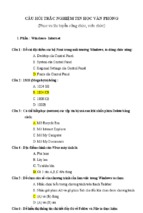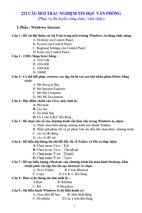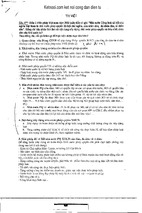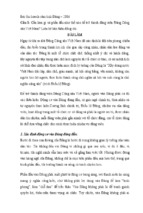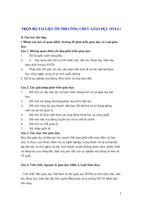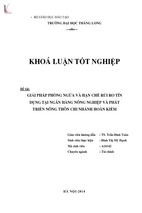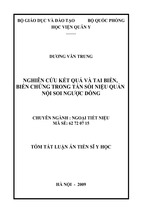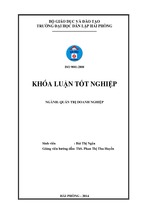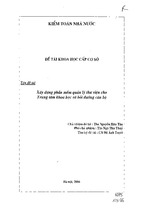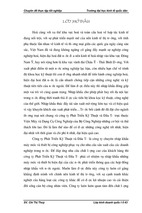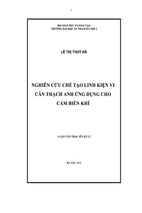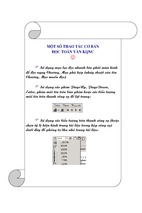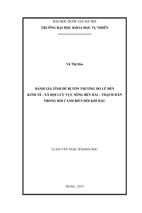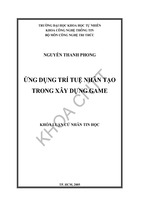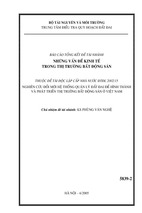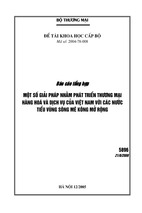First and foremost I would like to thank the anonymous reviewers whose
comments pointed me in the right direction. I would also like to thank
Dan Malt for his endless patience, intelligent insights, and thorough
proofreading. My thanks go to Jill Lake, Melanie Blair and Priyanka
Pathak at Palgrave Macmillan, whose constant support and encouragement
have helped me finish this book. I have had a number of engaging
and useful discussions with various friends and colleagues who have
helped me put together my ideas for this book. These include: Masumi
Azuma, John Barnden, Frank Boers, Nicholas Groom, Susan Hunston,
Almut Koester, Seth Lindstromberg, Graham Low, Fiona MacArthur,
Narges Mahpeykar, Rachael Manamley, Joanne Neff, Veronica Ormeno,
John Taylor,Wolfgang Teubert, Andrea Tyler, andMona Zeynab. I would
particularly like to thank Martin Pütz for inviting me to the LAUD
Symposium on Cognitive Linguistics and Second Language Learning,
which took place in Landau, Germany, in March 2008. At this symposium,
I heard many papers and spoke to numerous people who
helped me shape my ideas about cognitive linguistics and its applications
to second language learning and teaching. A number of people
have acted as linguistic and cultural informants. I would particularly
like to thank Yeongsil Ko, Hung So Lee, Yasuo Nakatani, Richard Spiby,
Ayumi Takahashi, Grace Wang, Fei Fei Zhang, and the Kodankan Judo
Institute, Niigata, Japan. Finally, I would like to thank my insightful MA
students at the University of Birmingham, with whom I discussed many
of my early ideas.
Copyright material from www.palgraveconnect.com - licensed to Universitetsbiblioteket i Tromso - PalgraveConnect - 2011-04-19
Applying Cognitive Linguistics to Second Language
Learning and Teaching
10.1057/9780230245259 - Applying Cognitive Linguistics to Second Language Learning and Teaching, Jeannette Littlemore
Also by Jeannette Littlemore
FIGURATIVE THINKING AND FOREIGN LANGUAGE LEARNING
(with Graham Low, 2006)
10.1057/9780230245259 - Applying Cognitive Linguistics to Second Language Learning and Teaching, Jeannette Littlemore
Copyright material from www.palgraveconnect.com - licensed to Universitetsbiblioteket i Tromso - PalgraveConnect - 2011-04-19
ICT AND LANGUAGE LEARNING. INTEGRATING PEDAGOGY AND
PRACTICE (edited with Angela Chambers and Jean Conacher, 2004)
Jeannette Littlemore
University of Birmingham, UK
10.1057/9780230245259 - Applying Cognitive Linguistics to Second Language Learning and Teaching, Jeannette Littlemore
Copyright material from www.palgraveconnect.com - licensed to Universitetsbiblioteket i Tromso - PalgraveConnect - 2011-04-19
Applying Cognitive
Linguistics to Second
Language Learning and
Teaching
© Jeannette Littlemore 2009
No portion of this publication may be reproduced, copied or transmitted
save with written permission or in accordance with the provisions of the
Copyright, Designs and Patents Act 1988, or under the terms of any licence
permitting limited copying issued by the Copyright Licensing Agency,
Saffron House, 6-10 Kirby Street, London EC1N 8TS.
Any person who does any unauthorized act in relation to this publication
may be liable to criminal prosecution and civil claims for damages.
The author has asserted her right to be identified
as the author of this work in accordance with the Copyright,
Designs and Patents Act 1988.
First published 2009 by
PALGRAVE MACMILLAN
Palgrave Macmillan in the UK is an imprint of Macmillan Publishers Limited,
registered in England, company number 785998, of Houndmills, Basingstoke,
Hampshire RG21 6XS.
Palgrave Macmillan in the US is a division of St Martin’s Press LLC,
175 Fifth Avenue, New York, NY 10010.
Palgrave Macmillan is the global academic imprint of the above companies
and has companies and representatives throughout the world.
Palgrave® and Macmillan® are registered trademarks in the United States,
the United Kingdom, Europe and other countries.
ISBN-13: 978–0–230–21948–9 hardback
This book is printed on paper suitable for recycling and made from fully
managed and sustained forest sources. Logging, pulping and manufacturing
processes are expected to conform to the environmental regulations of the
country of origin.
A catalogue record for this book is available from the British Library.
A catalog record for this book is available from the Library of Congress.
10 9 8 7 6 5 4 3 2 1
18 17 16 15 14 13 12 11 10 09
Printed and bound in Great Britain by
CPI Antony Rowe, Chippenham and Eastbourne
10.1057/9780230245259 - Applying Cognitive Linguistics to Second Language Learning and Teaching, Jeannette Littlemore
Copyright material from www.palgraveconnect.com - licensed to Universitetsbiblioteket i Tromso - PalgraveConnect - 2011-04-19
All rights reserved. No reproduction, copy or transmission of this
publication may be made without written permission.
Copyright material from www.palgraveconnect.com - licensed to Universitetsbiblioteket i Tromso - PalgraveConnect - 2011-04-19
For Dan, Joe and Oscar, with love
10.1057/9780230245259 - Applying Cognitive Linguistics to Second Language Learning and Teaching, Jeannette Littlemore
10.1057/9780230245259 - Applying Cognitive Linguistics to Second Language Learning and Teaching, Jeannette Littlemore
Copyright material from www.palgraveconnect.com - licensed to Universitetsbiblioteket i Tromso - PalgraveConnect - 2011-04-19
This page intentionally left blank
List of Tables and Figures
x
Acknowledgements
xii
1 Introduction
1.1 What is ‘cognitive linguistics’?
1.2 Key concepts in cognitive linguistics and their
applications to second language learning and
teaching
2 ‘I see less of the surroundings. The story feels different’:
Construal and Second Language Learning
2.1 Introductory comments
2.2 Attention and salience
2.3 Perspective
2.4 Constitution
2.5 Categorization
2.6 Beyond transfer: other cognitive processes that
influence the acquisition of L2 construal patterns
2.7 The role of explicit teaching in the learning
of L2 construal patterns
2.8 Concluding comments
3 More on Categories: Words, Morphemes, ‘Grammar
Rules’, Phonological Features and Intonation Patterns
as Radial Categories
3.1 Introductory comments
3.2 Individual words and morphemes
as radial categories
3.3 ‘Grammar rules’ as radial categories
3.4 Phonological features as radial categories
3.5 Intonation patterns as radial categories
3.6 Concluding comments
1
1
4
13
13
15
21
25
26
33
38
39
41
41
42
57
64
67
69
vii
10.1057/9780230245259 - Applying Cognitive Linguistics to Second Language Learning and Teaching, Jeannette Littlemore
Copyright material from www.palgraveconnect.com - licensed to Universitetsbiblioteket i Tromso - PalgraveConnect - 2011-04-19
Contents
Contents
4 More about Spinsters and their Cats: Encyclopaedic
Knowledge and Second Language Learning
4.1 Introductory comments
4.2 What is meant by ‘encyclopaedic knowledge’?
4.3 Encyclopaedic knowledge and frame semantics
4.4 Idealized cognitive models
4.5 Clines of encyclopaedic knowledge
4.6 What aspects of encyclopaedic knowledge should be
taught?
4.7 How can encyclopaedic knowledge be taught?
4.8 Concluding comments
5 ‘Eyebrow heads’ and ‘yummy mummies’: Metaphor
and Second Language Learning
5.1 Introductory comments
5.2 Conceptual metaphor theory
5.3 Conceptual and linguistic metaphor: cross-linguistic
variation and implications for language learning
5.4 Recent developments in CMT and their implications
for language learning and teaching
5.5 Concluding comments
6 ‘You’ll find Jane Austen in the basement’ . . . or will
you? Metonymy and Second Language Learning
6.1 Introductory comments
6.2 Conceptual and linguistic metonymy
6.3 The relationship between metonymy and metaphor
6.4 The functions of metonymy
6.5 What challenges might metonymy present to second
language learners?
6.6 How might language learners be helped to deal
with metonymy?
6.7 Concluding comments
7 What Have Bees, Macaque Monkeys and Humans Got
in Common? Embodied Cognition, Gesture and Second
Language Learning
7.1 Introductory comments
7.2 The role of embodied cognition in grammar teaching
7.3 Embodied cognition and gesture
7.4 Cross-linguistic variation in the use of gesture
71
71
74
75
79
85
87
89
92
94
94
95
97
99
105
107
107
108
110
111
116
120
124
125
125
129
134
137
10.1057/9780230245259 - Applying Cognitive Linguistics to Second Language Learning and Teaching, Jeannette Littlemore
Copyright material from www.palgraveconnect.com - licensed to Universitetsbiblioteket i Tromso - PalgraveConnect - 2011-04-19
viii
Contents
8 ‘Loud suits’ and ‘sharp cheese’: Motivated Language
and Second Language Learning
8.1 Introductory comments
8.2 Explainable form–form connections
8.3 Explainable form–meaning connections
8.4 Explainable meaning–meaning connections
8.5 Limitations to the teaching of motivated language in
the classroom
8.6 Concluding comments
9 ‘Brian sent Antarctica a walrus’: Construction
Grammars and Second Language Learning
9.1 Introductory comments
9.2 Goldberg’s (1995) construction grammar
9.3 Relationships between constructions
9.4 Learning constructions explicitly: classroom
applications of Goldberg’s theory
9.5 Learning constructions implicitly: Tomasello’s
usage-based account of L1 acquisition and its
applications to L2 acquisition
9.6 Concluding comments
141
142
146
148
148
149
150
153
160
161
162
162
165
171
174
178
185
10 Conclusion
186
References
191
Index
209
10.1057/9780230245259 - Applying Cognitive Linguistics to Second Language Learning and Teaching, Jeannette Littlemore
Copyright material from www.palgraveconnect.com - licensed to Universitetsbiblioteket i Tromso - PalgraveConnect - 2011-04-19
7.5 How do learners benefit from seeing gesture when
listening to the target language?
7.6 How do learners benefit from using gesture when
working in the target language?
7.7 Concluding comments
ix
Tables
5.1 The main differences between conceptual and linguistic
metaphors
6.1 Linguistic manifestations of conceptual metonymies in
English and Chinese (Wu, 2008)
9.1 Conceptual and syntactic accounts of the caused-motion
construction
98
119
167
Figures
2.1
Some cross-linguistic differences in terms of the way
languages divide up spatial categories. Adapted from
Bowerman and Choi (2001: 485) with the permission
of the author and Cambridge University Press
3.1
Different, yet related, senses of through shown by the
Bank of English data
3.2
An example of a radial category diagram for through,
based on the corpus data in Figure 3.1
3.3(a) Senses of out
3.3(b) Statistics showing the relative use made by native and
non-native speakers of English of these different
categories of out (Mahpeykar, 2008), reproduced with
the permission of the author
3.4
Senses of threading found in the Bank of English (from
Littlemore and MacArthur, 2007a)
3.5
Citations for the string are owed by in the Bank of
English
7.1
A possible image schema for can in Talmy’s force
dynamic system
7.2
A possible image schema for cannot in Talmy’s force
dynamic system
7.3
A possible image schema for must in Talmy’s force
dynamic system
30
43
44
51
52
55
60
130
130
131
x
10.1057/9780230245259 - Applying Cognitive Linguistics to Second Language Learning and Teaching, Jeannette Littlemore
Copyright material from www.palgraveconnect.com - licensed to Universitetsbiblioteket i Tromso - PalgraveConnect - 2011-04-19
List of Tables and Figures
List of Tables and Figures xi
8.1
8.2
A possible image schema for should in Talmy’s force
dynamic system
Directionalities of synaesthesia, according to Williams
(1976: 463)
A possible illustration of the difference between few
and a few
131
153
155
10.1057/9780230245259 - Applying Cognitive Linguistics to Second Language Learning and Teaching, Jeannette Littlemore
Copyright material from www.palgraveconnect.com - licensed to Universitetsbiblioteket i Tromso - PalgraveConnect - 2011-04-19
7.4
First and foremost I would like to thank the anonymous reviewers whose
comments pointed me in the right direction. I would also like to thank
Dan Malt for his endless patience, intelligent insights, and thorough
proofreading. My thanks go to Jill Lake, Melanie Blair and Priyanka
Pathak at Palgrave Macmillan, whose constant support and encouragement have helped me finish this book. I have had a number of engaging
and useful discussions with various friends and colleagues who have
helped me put together my ideas for this book. These include: Masumi
Azuma, John Barnden, Frank Boers, Nicholas Groom, Susan Hunston,
Almut Koester, Seth Lindstromberg, Graham Low, Fiona MacArthur,
Narges Mahpeykar, Rachael Manamley, Joanne Neff, Veronica Ormeno,
John Taylor, Wolfgang Teubert, Andrea Tyler, and Mona Zeynab. I would
particularly like to thank Martin Pütz for inviting me to the LAUD
Symposium on Cognitive Linguistics and Second Language Learning,
which took place in Landau, Germany, in March 2008. At this symposium, I heard many papers and spoke to numerous people who
helped me shape my ideas about cognitive linguistics and its applications to second language learning and teaching. A number of people
have acted as linguistic and cultural informants. I would particularly
like to thank Yeongsil Ko, Hung So Lee, Yasuo Nakatani, Richard Spiby,
Ayumi Takahashi, Grace Wang, Fei Fei Zhang, and the Kodankan Judo
Institute, Niigata, Japan. Finally, I would like to thank my insightful MA
students at the University of Birmingham, with whom I discussed many
of my early ideas.
xii
10.1057/9780230245259 - Applying Cognitive Linguistics to Second Language Learning and Teaching, Jeannette Littlemore
Copyright material from www.palgraveconnect.com - licensed to Universitetsbiblioteket i Tromso - PalgraveConnect - 2011-04-19
Acknowledgements
1
1.1 What is ‘cognitive linguistics’?
Cognitive linguistics is a relatively new discipline which is rapidly
becoming mainstream and influential, particularly in the area of second language teaching. It embraces a number of closely related theories
of language, all of which are based on the following key claims:
• there is no autonomous, special-purpose ‘language acquisition
device’ that is responsible for language acquisition and language
processing;
• language is ‘usage-based’ in that it is a product of physical interaction
with the world;
• a single set of cognitive processes operates across all areas of language,
and these processes are involved in other types of knowledge and
learning besides language;
• words provide only a limited and imperfect means of expression;
• language is inherently meaningful although grammatical meanings
are more abstract than lexical meanings.
Let us examine each of these claims more closely. By asserting that
there is no special-purpose language acquisition device, cognitive
linguists directly challenge generative approaches to language, and the
concept of Universal Grammar. I refer here to Chomsky (1965) and others (e.g. Fodor, 1983) whose theories about language are based on the
conviction that the human mind includes a faculty for language acquisition which is largely ‘walled-off’ from the rest of cognition. Unlike
generative linguists, cognitive linguists argue that the cognitive processes governing language use and learning are essentially the same as
1
10.1057/9780230245259 - Applying Cognitive Linguistics to Second Language Learning and Teaching, Jeannette Littlemore
Copyright material from www.palgraveconnect.com - licensed to Universitetsbiblioteket i Tromso - PalgraveConnect - 2011-04-19
Introduction
2
Applying Cognitive Linguistics to L2 Learning and Teaching
the organization and retrieval of linguistic knowledge is not significantly different from the organization and retrieval of other
knowledge in the mind, and the cognitive abilities that we apply to
speaking and understanding language are not significantly different
from those applied to other cognitive tasks, such as visual perception,
reasoning, or motor activity.
The language that we encounter every day serves as input from
which we can draw inferences about form–meaning relationships, typical patterns and schemata. We constantly modify our mental lexicon
in response to the language that we hear and use. There is therefore no
distinction between language competence and language performance,
as performance equates to usage. Language knowledge and learning are
thus usage-based, in that our knowledge of language is ‘derived from
and informed by language use’ (Evans and Green, 2006: 111). The fact
that we use language in interactive settings, and that we use contextual
cues to work out what our speaker is trying to say, is an important part
of this process.
The set of key cognitive processes that are thought to be involved in
language learning and use include comparison, categorization, patternfinding, and blending. They operate across all areas of language and are
the same as those involved in other areas of cognition. In other words,
the processes that we use to make sense of our surroundings are the same
as those that we employ when dealing with and learning languages.
The fact that words provide only a limited and imperfect means of
expression means that in order to understand what our interlocutor is
trying to tell us, as well as attending to the actual words that they utter,
we need to draw on our general knowledge of the subject under discussion and our expectations about what our interlocutor might have to say
about it. In other words, the words that we read or hear act simply as a
trigger for a series of cognitive processes whereby we use our knowledge
of the world to fill in the rest of the missing information. For example, if
I rang home and said ‘I’m just passing the chip shop and was wondering
if we had anything in for dinner’, it would be up to my interlocutor to
infer that I was suggesting fish and chips for dinner, and offering to buy
them there and then. None of this information is explicitly given in the
utterance, but would be inferred, based on his or her general knowledge
10.1057/9780230245259 - Applying Cognitive Linguistics to Second Language Learning and Teaching, Jeannette Littlemore
Copyright material from www.palgraveconnect.com - licensed to Universitetsbiblioteket i Tromso - PalgraveConnect - 2011-04-19
those involved in all other types of knowledge processing, or as Croft
and Cruse (2004: 2) put it:
of what is available at the ‘chip shop’, the fact that fish and chips constitutes a meal, and so on. The knowledge that we draw on to understand
utterances such as these is referred to as encyclopaedic knowledge, and
is discussed in Chapter 4.
The centrality of meaning is a fundamental claim of cognitive linguistics. When new words and phrases enter a language, they tend to
do so as ‘content’ words, which means that they have concrete, lexical
meanings. Over time, through the process of grammaticalization (see
Hopper and Traugott, 2003), some of these words and phrases become
‘function’ words; that is to say, they acquire a more schematic, grammatical meaning which is different from, yet related to, their original lexical
meaning. For example, the original meaning of ‘going to’ in English
refers to movement and travel (Heine et al., 1991). However, over time,
this phrase has acquired a much more common grammatical meaning as
an indicator of future action. Although the process of grammaticalization occurs in all languages, it does not always follow the same patterns.
So, for example, the use of ‘going to’ to indicate future action is not used
in Japanese. For native speakers of a language, grammaticalized expressions such as this have often lost their link with their original lexical
meanings. However, when we learn a new language, we are exposed
to different grammaticalization patterns, and the links to the original
lexical meanings of the items often seem more apparent.
One of the contributions that cognitive linguistics makes to second
language learning and teaching is to suggest ways in which the relationships between grammatical expressions and their original lexical
meanings can be made apparent in the language classroom to enhance
learning and memorization. This process encourages learners to explore
the deeper meanings of grammatical items, and to think about why
the target language expresses things the way it does. According to
Langacker (2008: 73), the learning of grammatical usage in this way
involves grasping the semantic ‘spin’ that the target language imposes,
which, he claims, is ‘a far more natural and enjoyable process than sheer
memorization’. Cognitive linguistics thus posits a much closer relationship between form and meaning than more traditional approaches to
language, which, as we will see later in the book, has far reaching
implications for the way we look at language learning and teaching.
The above claims give rise to a number of key concepts in cognitive
linguistics, many of which are of particular relevance to second language
learning and teaching. Those concepts which are most relevant to the
field are: construal, categorization, encyclopaedic knowledge, metaphor,
metonymy, embodiment, motivation, and construction grammar. In
10.1057/9780230245259 - Applying Cognitive Linguistics to Second Language Learning and Teaching, Jeannette Littlemore
Copyright material from www.palgraveconnect.com - licensed to Universitetsbiblioteket i Tromso - PalgraveConnect - 2011-04-19
Introduction 3
Applying Cognitive Linguistics to L2 Learning and Teaching
this book, I consider each of these concepts and look at how they relate
to second language learning and teaching. As we will see later, some
of these concepts give rise to possible new ways of teaching languages,
whereas others provide further support for existing methodologies. The
potential contribution that each can make to theories of second language learning and teaching is rich and varied, which is why one chapter
is dedicated to each.
1.2 Key concepts in cognitive linguistics and their
applications to second language learning and teaching
In this section, I introduce seven key concepts in cognitive linguistics
and briefly say why I think they may be of interest to those who are
concerned with second language learning and teaching. In doing so, I
provide the outline for the remaining chapters of the book. Although
these concepts are separated out for the purpose of writing this book, in
many ways they are inextricably linked.
In Chapter 2, I introduce the concept of construal. A key claim in
cognitive linguistics is that the words we use to talk about a particular
phenomenon can never reflect a purely objective view of that phenomenon. We can only witness phenomena through human eyes and
from a human perspective. While there may be default ways of describing situations, there is no completely neutral way of describing them.
Because perspective is never neutral, the language we use is not neutral
either, rather it reflects certain ways of viewing the world. For example,
we can talk about running across a cornfield, but we can also talk about
running through a cornfield. Both describe the same event, but with
across, the focus is more on the end result, whereas with through, the
focus is on the process of running, and maybe makes us think about the
height of the corn. Although we do have choices as to how we present
our ideas, because of processes, such as grammaticalization, a language
often contains ways of conventionally construing phenomena and events
which sometimes differ from the way in which they are construed in
other languages. Languages are no more and no less ‘logical’ than each
other in this respect. They are simply different. The phrases that they
contain represent particular ways of conceiving of a given situation.
They may categorize things differently, highlight different elements of
a situation, look at them from a different angle, or look at them more
closely. It is because of these different construal patterns that learners of
a second language sometimes comment that speaking the new language
enables them to ‘see things in different ways’.
10.1057/9780230245259 - Applying Cognitive Linguistics to Second Language Learning and Teaching, Jeannette Littlemore
Copyright material from www.palgraveconnect.com - licensed to Universitetsbiblioteket i Tromso - PalgraveConnect - 2011-04-19
4
Let us look at some examples of how languages construe things in
different ways. We will see in Chapter 2 that there are four main ways in
which our construal of phenomena or events affects how we talk about
them. These are: attention/salience (the part of the phenomenon that
stands out most, or in which we are most interested); perspective (the
standpoint from which we view the phenomenon); constitution, (how
fine-grained or ‘close-up’ our view of a phenomenon is); and categorization (how we divide phenomena up into categories). All four types of
construal reflect differences in the way in which phenomena are viewed,
which in turn affects the way they are talked about. For example, in an
English park we might be told to keep off the grass, whereas in Japan we
would be more likely to be told not to go into the grass.
Of these four areas, the one that has received the most attention
from researchers is categorization. Language-specific categories provide a neat explanation for the fact that there are very few one-to-one
correspondences between languages, so something we might describe
as a bowl in English would not always be described as un bol. Thus,
in French it is possible to ‘verser le consommé dans une assiette’
(literally-speaking ‘pour the soup into a plate’) as the word assiette can
be used to refer to a wider variety of vessels than the word plate. In
other words, the cut-off point between a plate and a bowl is different
from the cut-off point between une assiette and un bol. In English it
lies more towards the plate end of the continuum, whereas in French
it lies more towards the bowl end of the continuum. Categories are
said to be radial and to have ‘fuzzy boundaries’. In other words, they
have members that can be considered as more or less ‘prototypical’
and they overlap with each other. Early researchers in cognitive linguistics (e.g. Rosch, 1975) found considerable cross-linguistic variation in
both of these areas. For example, for most British English speakers, the
most prototypical comestible fish is probably cod or haddock, whereas
for Spaniards, it is more likely to be hake or sardines. As an example of
cross-linguistic variation in terms of where the ‘fuzzy’ boundaries lie,
the type of footwear that comes above the ankle would tend to fall into
the category of ‘boot’ in English, whereas in French it is more likely to
be classified as a ‘chaussure’ (‘shoe’). Categorization systems go beyond
the noun, and can account for variation in other parts of speech, such as
verbs, adjectives, adverbs and determiners. For instance, in English we
divide objects into those that are countable (e.g. houses) and those that
are uncountable (e.g. sugar). In Japanese this division does not exist, but
objects have different determiners according to whether they are, for
example, short and flat, long and thin, animate or inanimate and so on.
10.1057/9780230245259 - Applying Cognitive Linguistics to Second Language Learning and Teaching, Jeannette Littlemore
Copyright material from www.palgraveconnect.com - licensed to Universitetsbiblioteket i Tromso - PalgraveConnect - 2011-04-19
Introduction 5
Applying Cognitive Linguistics to L2 Learning and Teaching
The fact that languages differ with respect to the ways in which they
construe objects and events leads one to expect that this might well be a
source of difficulty for second language learners. Indeed, as we will see in
Chapter 2, Japanese learners of English, and English learners of Japanese
do experience difficulties in the area of countable versus uncountable,
and long thin versus short flat objects, respectively. Different languages
conventionally construe things differently, and although we may not
be consciously aware of it, it is likely that our cognitive systems will,
to some extent, have been ‘primed’ by our first language (L1) in ways
which might interfere with our learning of subsequent languages. We
may be preconditioned in some ways to pay more attention to, or be
more aware of those features of the world that are explicitly encoded in
our language, and to be less aware of those that are not. In other words,
we may develop ‘cognitive habits’ (Hunt and Agnoli, 1991) as a result
of having acquired our first language, which may need to be broken or
adapted in order to facilitate the learning of a second language (L2).
Comparing the respective construal patterns of a learner’s L1 and L2
may thus get us some way towards predicting the types of problems
that second language learners are likely to encounter. Indeed, it has
been suggested (e.g. Taylor, 1993) that one of the main contributions
that cognitive linguistics can make to theories of language learning and
teaching is in the area of contrastive analysis. Under the contrastive
analysis hypothesis (Wardaugh, 1970), which was popular in the 1970s,
comparisons were made between the grammatical systems of different
languages in order to predict the types of errors that language learners might make. The hypothesis fell out of favour, partly because other
factors were found to influence L2 acquisition besides the nature of
one’s first language, and partly because of its over-emphasis on syntax. Taylor’s point is that cognitive linguistics has a different view of
language, in which ‘meaning’ rather than ‘syntax’ is central, and that
cognitive linguistic tools such as construal and categorization provide
us with better, more flexible tools that can be used for identifying
important differences between languages. These differences can then be
used to predict areas that are likely to present difficulties to language
learners. Findings from cognitive linguistics can thus complement and
extend earlier approaches to contrastive analysis which were much more
static, and which relied upon more traditional ‘grammar rules plus lexis’
views of language. Indeed, findings from cognitive linguistics probably do have a great deal to contribute to contrastive analysis, and as
we will see in Chapter 2, the construal patterns in a learner’s first language can affect their ability to learn a second language. But cognitive
10.1057/9780230245259 - Applying Cognitive Linguistics to Second Language Learning and Teaching, Jeannette Littlemore
Copyright material from www.palgraveconnect.com - licensed to Universitetsbiblioteket i Tromso - PalgraveConnect - 2011-04-19
6
linguistics can also address the remaining issues that were not covered
by the contrastive analysis hypothesis. In other words, because of its
focus on usage-based learning (which involves intention reading and
pattern finding) it can tell us more about how other cognitive processes,
such as noticing, over- and under-extension and probabilistic reasoning,
play a key role in determining both the ‘what’ and the ‘how’ of second
language learning.
Chapter 3 looks at the construction of radial categories (e.g. Lakoff,
1987; Taylor, 2003) in which categorization and related concepts, such
as family resemblance, are applied to other linguistic phenomena, such
as polysemy. Under this view, the various senses of particular words
are also viewed as radial categories, with the more concrete, physical
senses lying towards the centre of the category and the more abstract,
metaphorical senses lying towards the periphery. The different senses
are thought to be related through metaphor and metonymy. I explore
the implications that this has for language learning and teaching. Then I
go on to look at other areas of language that have been found to operate
within radial categories, such as grammar rules, phonological features,
and intonation. I explore whether and how flexible categories might
be appealed to when teaching these areas of language. I argue that if
teachers present language features as flexible categories they will give
their learners a more accurate picture of how language really works and
help them to understand why the ‘rules’ they may have learned have
so many exceptions. A second aim of this chapter is to use corpus data
to test some of the claims that have been made by cognitive linguists
about the nature of radial categories, and to see how these claims stand
up in the light of authentic language data.
In Chapter 4, I look at L2 vocabulary learning in more depth, focusing
on encyclopaedic knowledge. The information we store in our minds
extends well beyond the basic or ‘denotative’ meanings that words have,
and includes all the connotations that have come to be associated with
those words and expressions over the period during which we have been
exposed to them. For example, the English words bachelor and spinster
mean much more than ‘unmarried man’ and ‘unmarried woman’. The
word bachelor may connote ideas of freedom and licentious behaviour,
whereas the word spinster may connote ideas of old age, a possible
lack of desirability, and for some people it may even include idiosyncratic associations, such as the possession of a large number of cats. In
recent years there have been attempts to reclaim the word spinster so
that it has the free and independent sense of bachelor (see, for example,
Weedon, 1999). Advocates of this reclamation object to the fact that the
10.1057/9780230245259 - Applying Cognitive Linguistics to Second Language Learning and Teaching, Jeannette Littlemore
Copyright material from www.palgraveconnect.com - licensed to Universitetsbiblioteket i Tromso - PalgraveConnect - 2011-04-19
Introduction 7
- Xem thêm -

